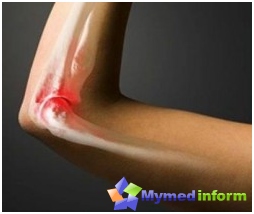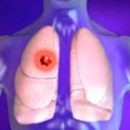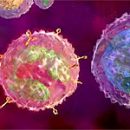Reasons for the development of rheumatism

The disease causes beta hemolytic streptococcal infection of the group A. Because of these specific bacteria, we support tonsillitis, Angina and pharyngitis. If you neutralize the diseases of the upper respiratory tract on time and prevent complications, the risk of rheumatoid arthritis is minimal. Statistics noted that after «acquaintance» With a cunning streptococcus from 0.4 to 3% of people ill rheumatism.
In the risk area, beautiful gender, children and adolescents (from 7-8 to 14-17 years old), as well as people who have in the family were or there are cases of rheumatoid lesion of connective tissue. The easiest target for rheumatism is a person who has suffered a sharp form of streptococcal infection or suffering from frequent infectious diseases of the nasopharynx.
Rheumatism: «their» against «Self»
Rheumatism - paradoxical disease. When streptococcus bacteria penetrate into the body, the immune system immediately reacts to illegal invasion of the production of special antibodies. They calculate Streptococcal «enemy» According to specific signs of its structure. The trouble is that myocardia and connecting fabric consist of the similar ones on the device molecules - their antibodies and take for alien! The price of such «Errors» - Heart health, blood vessels and joints that undermine inflammatory processes, deforming the joints and provoking various vices of the heart.
Symptoms of the disease

The diagnosis is determined by a rheumatologist based on clinical and immunological blood test. The results of the study during rheumatism indicate inflammatory processes and the presence of special substances that appear in the body 6-7 days after the start of the disease.
To assess the condition of the heart, use electrocardiography (ECG) and echocardiography. Using X-ray, you can get information about the state of the joints. When the doctor needs a more detailed picture of the course of the disease, it prescribes such procedures as a joint biopsy, arthroscopy and diagnostic puncture of the joint liquid.
Treatment of rheumatism

Our site notes that the disease was confirmed, the earlier treatment was prescribed, the better. The basis of complex therapy is a decrease in streptococcal and inflammation activity, prevention of heart defect.
Treatment of rheumatism consists of several «Steps».
Hospital treatment Executes drug therapy, balanced dietary nutrition and a complex of medical exercise, adapted to the state of each patient. As a basic means in the fight against rheumatism, penicillin is used for 10-14 days, which is dictated by the streptococcal essence of the disease. Also isolated prescribed the drug belonging to the group of non-steroidal anti-inflammatory agents (meloxicams, nimesulide, celecoxib). Treatment Long - no less than 1-2 months before the total completion of the active phase of the disease.
If the course of rheumatism is complicated by the presence of chronic tonsillitis in a patient, penicillin treatment is prolonged. Another option is possible when another one is prescribed in addition to Penicillin antibiotic. This may be amoxicillin, clarithromycin, azithromycin, cefuroxime.
If the degree of inflammation activity causes concerns from doctors, treat with glucocorticosteroids (hormone therapy). For example, the initial dose of the drug prednisone is used for two weeks until the desired effect is noticeable, then the amount of injected drug is gradually reduced every 6-7 days, relying on clinical and laboratory indicators.
At the initial stage of the development of the disease, when there is a minimum degree of inflammation activity, quinoline drugs are prescribed (delagil, placmenyl). They take them enough long - from several months to 1-1.5 years, depending on the nature of the development of rheumatism.

Treatment in a Cardio-Rhematological Sanatorium. At this stage, before the patient and his attending physician, it is tasked to bring the disease to complete remission and restore the functional ability of the cardiovascular system.
In the sanatorium, the treatment is continued, which began in the hospital, adding it to the medical and wellness regime (therapeutic physical education, hardening).
Regular observation in the clinic provides for the prevention of repeated cases of the disease and its progression. For this, Penicillin prolonged action is used (mainly bicillin-5 once every 2-4 weeks all year round).
2 times a year the patient passes an outpatient examination, he is shown wellness activities and therapeutic physical education. If with rheumatism, the heart has not suffered, the prevention on the basis of bicillinotherapy is carried out for 5 years after the last attack. In the spring and autumn, in addition to Bicillina, the patient undergoes a course of treatment with non-steroidal anti-inflammatory drugs.









